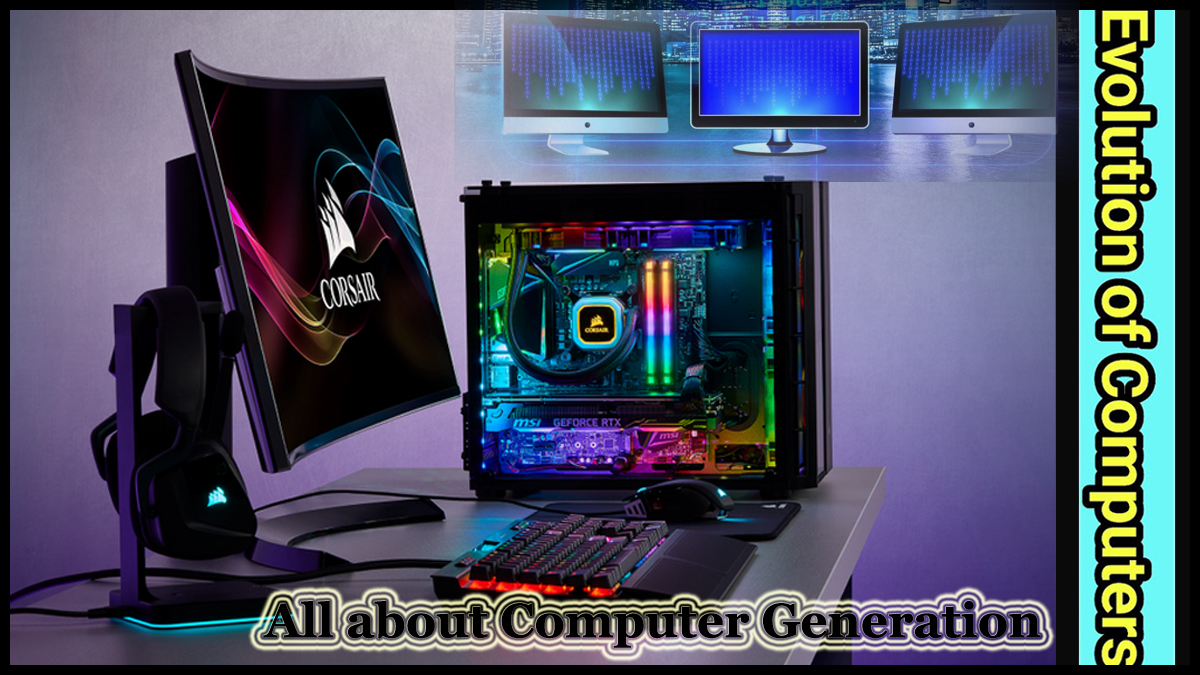
Computer Generation: The history of computers can be divided into several generations, each marked by significant technological advancements that transformed the way computers functioned. In this article, we will discuss the various generations of computers, their characteristics, and the technologies that emerged during each era.
First Generation Computers (1940-1956)
The first generation of computers was characterized by the use of vacuum tubes as the primary electronic component. These tubes were large, fragile, and prone to failure. And the machines that used them were often huge, taking up entire rooms. These computers were primarily used for scientific calculations and military applications such as code-breaking.
One of the most famous first-generation computers was the ENIAC (Electronic Numerical Integrator and Computer). Also which was built during World War II to calculate artillery firing tables. The machine weighed over 30 tons, contained over 17,000 vacuum tubes, and could perform 5,000 additions per second.
Second Generation Computers (1956-1963)
The second generation of computers saw the replacement of vacuum tubes with transistors. And which were smaller, more reliable, and required less power. This allowed for the development of smaller, faster, and more reliable computers, which could perform a wider range of functions.
One of the most significant advancements during this era was the invention of the magnetic core memory. Also which allowed computers to store information more efficiently and quickly than ever before.
Third Generation Computers (1964-1971)
The third generation of computers marked the introduction of integrated circuits. And which combined multiple transistors and other components onto a single chip. This allowed for even smaller and faster computers, which could perform more complex tasks.
During this era, the concept of time-sharing was introduced, which allowed multiple users to access a single computer simultaneously. This led to the development of the first computer networks, which eventually evolved into the internet we know today.
Fourth Gen. Computers (1971-1983)
The fourth generation of computers saw the introduction of the microprocessor. Also which combined the functions of a CPU onto a single chip. This allowed for even smaller, more powerful computers, which could be used by individuals in their homes and offices.
During this era, the development of personal computers. Such as the Apple II and the IBM PC revolutionized the way people worked and communicated. The introduction of floppy disks and hard drives allowed for the storage of vast amounts of data. And the development of software such as word processors and spreadsheets made computing even more accessible to the average person.
Fifth Gen. Computers (1984-Present)
The fifth generation of computers is Characterized by the development of Artificial intelligence. And other advanced Technologies such as virtual reality and the internet of things. This era has seen the Eemergence of Supercomputers capable of processing vast amounts of data and Ssimulating complex systems.
The development of Graphical user Interfaces (GUIs). And the internet has made Computing more Accessible to people all over the world. And the introduction of mobile devices such as Smartphones and tablets has further revolutionized the way people work and communicate.
Also Read – All about Britannia Industries Limited
Conclusion: Computer Generation
The history of computers is a Testament to human ingenuity and innovation. From the giant room-sized machines of the first generation to the powerful supercomputers of today. Also computers have transformed the way we live, work, and communicate. As technology continues to evolve, it is exciting to imagine what the future of computing will look like.
Also Read – Recession in US
